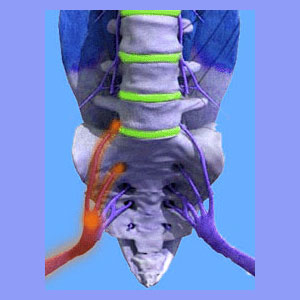
A sciatica pillow is a sleeping or sitting device which helps patients cope with the symptoms of lower back and leg pain at home, at work or on the go. Pillows fall into 2 different categories, depending on what purpose the device is trying to serve. Most sciatica cushions are designed to be sat upon, supposedly relieving pressure on the sciatic nerve from the weight of the body. The other type of pillow is the sleeping variety, designed to align the spine and lessen back and leg pain conditions.
Does either variety work well for providing symptomatic relief? Let’s read more about pillows for sciatica and investigate the possibilities of decreasing the duration, rate of recurrence or severity of symptoms with such an easy fix.
Pillows for Sitting
Sciatica from sitting is a very common expression of back and leg pain. Most patients desire a comfortable seated position and many try to use special pillows to provide some assistance towards this end. While these devices may increase general comfort, they are not likely to provide any real benefits for relieving sciatica. If you choose to use one of these pillows, make it out of a desire for a more relaxed seated posture, not due to an unrealistic wish for a sciatica cure.
Pillows an be very useful in cases of coccyx pain, particularly those which completely remove all stress from the tailbone using a donut shape. Pillows might also help provide substantial benefits from some diagnosed piriformis syndrome patients, as well.
Sciatica Pillow for Sleeping
Sleeping sciatica is commonly an expression of a mindbody syndrome, rather than a pure structural issue. In these cases, no pillow, drug or device will do anything to cure the pain. For actual anatomical sciatica conditions which may occur when reclining, a pillow is still not likely to do much good. However, some causes of sciatica might respond well to changes in pillow size, shape or firmness, especially when these issues exist in the cervical spine.
A back pain pillow is typically marketed to align the spine and provide support for the head and neck, reducing or eliminating some of the suspected causes of sciatica, such as nerve root compression. I find this logic to be almost insulting in most cases, since almost all pillows do this and I do not subscribe to the consumer theory that every patient requires a special pillow, mattress or anything else in order to get a good night’s sleep. It is all modern marketing and is used to separate you from your money.
Of course, in particular cases of positional-related sciatica, using some extra pillows to help maintain a specific sleeping posture may be beneficial. However, no special type of pillow is usually required. In many instances, patients who receive strong relief from a particular pillow may be under the influence of the placebo effect. As long as it works, there is no real harm here, if the effect lasts.
Sciatica Pillow Expectations
Pillows are great for increasing comfort level and minimizing pressure points on the backside when sitting. They may help increase circulation, especially if they are made out of memory foam. This may reduce the effects of ischemia, but will certainly not provide much hope for a permanent solution.
The best you can hope to achieve with a specialized pillow is a bit more relaxation and maybe a longer sitting or sleeping experience without pain. If you can get this much, and expect no more, then you can justify the cost.
Do not buy a special sciatic nerve pillow as a means of finding a cure, as you will likely to be greatly disappointed. Use trial and error and simply find a sensible pillow which feels comfortable to you.





